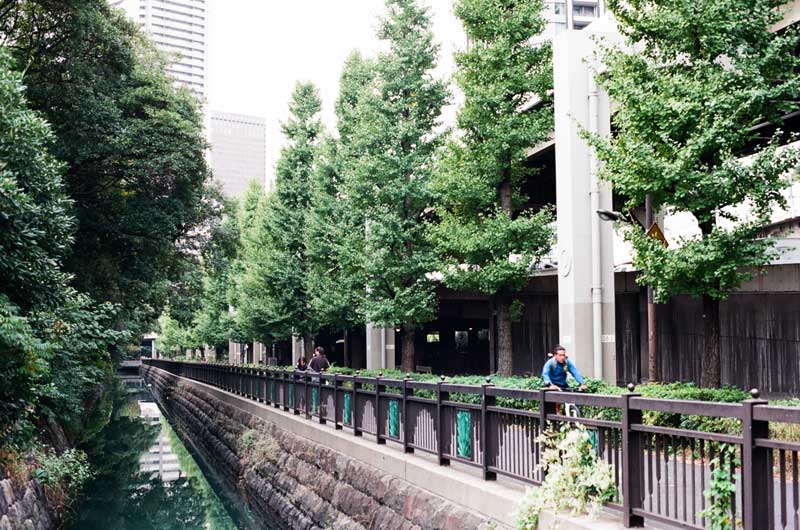
最近、贅沢な不動産開発が自然のイメージを広告に使っています。広告の中の田舎の森や現場から離れた風景を見ていると妙な 気持ちになります。本当の都市の森を作れば、不動産の価格はもっと上がります。西新宿で都市の森はどんな風に見えるだろう。
I’ve noticed recently more and more real estate advertising at construction sites and at recently completed buildings that show images of forests or famous urban landscapes that are nowhere near the location. A new luxury development rising at Jingumae 3 chome #37, the site of the former Harajuku Danchi, shows a photo of the ginko trees turning yellow on Icho Namaiki (いちょう並木).
Above is Nishi Shinjuku, which has several new office towers and new apartments on Ome Kaido, towards Nakano Sakaue. Following regulations, these buildings have planted street trees. But it is comical to see the image of a path meandering through a forest that’s half way up the new apartment building.
On the one hand, it’s good to see city people still dream of forests. On the other hand, these wealthy developers and the City of Tokyo regulators could increase the value of their properties by actually turning this marketing image into a reality.
What could an urban forest look like at this intersection?








